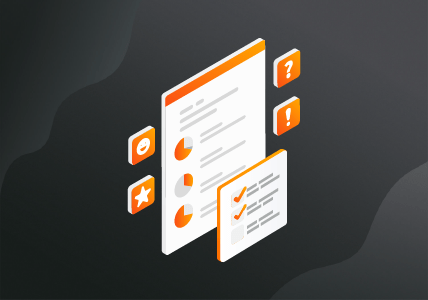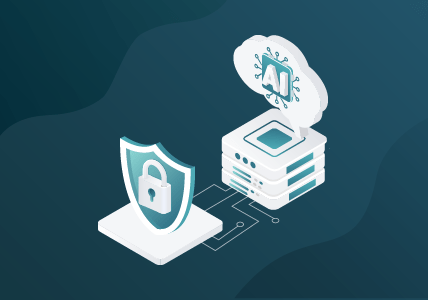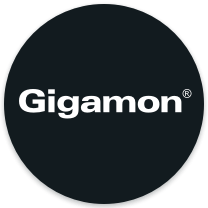What Is Hybrid Cloud Security?
The traditional way of managing IT infrastructure is constantly changing as technology evolves. More effective ways are innovated every day to best assist you with your infrastructure needs. At the forefront of this transformation is the hybrid cloud strategy — a mix of public and private cloud deployments.
A hybrid cloud is a computing environment that combines public clouds (like Amazon Web Services, Google Cloud Platform, and Microsoft Azure) with private clouds (data centers or other in-house IT resources). By doing so, businesses can reap the benefits of both worlds, leveraging public cloud scalability and efficiency while retaining the control and customization offered by private clouds.
What Is Hybrid Cloud Security?
Hybrid cloud security refers to the comprehensive suite of policies, technologies, and controls employed to protect data, applications, and infrastructure associated with a hybrid cloud environment. Below are the key elements that make up hybrid cloud security:
- Identity and access management (IAM): This ensures that only authorized users can access specific resources. It involves technologies and protocols that recognize, authenticate, and authorize users and devices.
- Data encryption: Data is encrypted when it’s stored (at rest) and when it’s being transferred or processed (in transit). This ensures that even if data is intercepted, it remains unreadable to unauthorized entities.
- Endpoint security: Protecting endpoints like user devices and servers from threats is crucial, especially in a hybrid environment where there might be numerous access points.
- Network security: This includes tools and technologies like firewalls, intrusion detection systems, and secure virtual private networks (VPNs) to safeguard the organization’s internal network and its connections to the broader internet and cloud services.
- Threat detection and response: These tools constantly monitor and analyze the hybrid environment for signs of potential threats or malicious activity. If detected, they can trigger automated or manual responses to mitigate the threat.
- Compliance and governance: Due to various industry regulations, businesses must ensure that their hybrid cloud environment adheres to the necessary compliance standards. This might include specific data handling and storage protocols, regular audits, and more.
- Physical security: Even in a cloud environment, the physical security of data centers (both owned and third-party) remains important. This includes controls to prevent unauthorized physical access to infrastructure.
So why would an organization need hybrid cloud security? As data flows between public and private clouds, it becomes exposed to an array of threats, some native to public clouds and others to private ones. Ensuring a seamless and secure transition of data, applications, and services is paramount for maintaining business integrity and compliance. Other reasons hybrid cloud security is essential include:
- Complexity: Hybrid clouds, by their nature, are complex, with multiple interconnected systems and services. This complexity can introduce potential vulnerabilities.
- Data movement: In hybrid cloud environments, data frequently moves between on-premises infrastructure and public cloud services. This transfer can introduce risks if not properly secured.
- Shared responsibility model: Public cloud providers operate on a shared responsibility model. This means that while they are responsible for the security of the cloud itself, customers are responsible for the security of the data and applications they put in the cloud.
- Regulatory compliance: Many industries have strict regulations on how customer or patient data is stored and transferred. Inadequate hybrid cloud security can lead to non-compliance and associated penalties.
Hybrid Cloud Security Benefits
Hybrid cloud security environments allow businesses to tap into the strengths of both private and public clouds. This means enhanced security through segmentation, ensuring that sensitive data remains isolated in the private cloud while non-sensitive workloads can leverage the public cloud’s scalability and cost-effectiveness.
Additionally, the hybrid cloud approach provides a robust foundation for business continuity and disaster recovery. Organizations can create redundancy by replicating data and applications across different cloud environments, ensuring minimal downtime in case of disruptions.
Hybrid Cloud Security Challenges
As with any technological advancement, embracing hybrid clouds also brings its fair share of challenges. It’s crucial to identify and address these challenges proactively to ensure a secure hybrid cloud environment.
Multi-cloud complexity and risk: With multiple cloud environments in play, managing security across them can become complex. Ensuring consistency in security policies and controls across hybrid clouds is a top priority:
- Data privacy and compliance concerns: Organizations must navigate the intricacies of data privacy regulations and compliance standards, which may vary across different cloud providers and regions.
- Ensuring seamless connectivity: Maintaining seamless connectivity between private and public clouds while maintaining security can be challenging. Effective network and access controls are essential.
Mitigating Risks to Achieve a Secure Hybrid Cloud
Addressing these challenges requires a proactive approach to mitigate risks and secure your hybrid cloud environment. Employing robust security solutions and implementing best practices is paramount.
Hybrid Cloud Security Best Practices
For a hybrid cloud environment to function smoothly, it is crucial to have effective security strategies in place. Here are some best practices to consider:
- Implementing effective security strategies: Develop a holistic security strategy that addresses both public and private cloud environments. Ensure that security is an integral part of your cloud deployment plan.
- Strengthening access controls and identity management: Robust access controls and identity management solutions are critical. Implement strong authentication mechanisms and granular access policies to prevent unauthorized access.
- Continuous monitoring and threat detection: Real-time monitoring and threat detection tools can help identify and respond to security incidents promptly. Leverage advanced analytics and machine learning for enhanced threat detection.
- Security automation and orchestration: Embrace automation to streamline security operations and respond rapidly to emerging threats. Automation can help reduce the burden on your security team and improve overall efficiency.
Hybrid Cloud Security Solutions
To achieve a secure hybrid cloud environment, organizations often turn to dedicated security solutions. Gigamon, a trusted leader in the field of observability tools, plays a crucial role in ensuring hybrid cloud security. Gigamon innovative solutions empower organizations to gain deep insights into their hybrid cloud environments, monitor network traffic, and detect potential security threats in real time.
The Gigamon Approach to Hybrid Cloud Security
In the current landscape, where 90 percent of organizations operate in hybrid and multi-cloud environments, the Gigamon Deep Observability Pipeline emerges as a pivotal solution to the challenges of security, consistent digital experiences, and operational efficiency. This approach, rooted in the GigaVUE Cloud Suite™, is designed to harness actionable, network-derived intelligence, ensuring that organizations can fully leverage the transformational promise of the cloud.
Deep Observability: A New Frontier in Cloud Security
Deep observability represents a significant advancement in cloud security for Gigamon. It extends beyond traditional observability methods that rely on metrics, events, logs, and traces (MELT). By integrating real-time network intelligence derived from packets, flows, and application metadata, Gigamon provides a source of truth that significantly enhances security posture and practices. This approach allows for a proactive security posture, pinpointing threats and anomalies to mitigate risk and expedite troubleshooting.
Key Components of the Gigamon Solution
- Access: Gigamon ensures deep observability into East-West (lateral), North-South, and container traffic across hybrid environments, adapting as deployments scale
- Broker: The solution facilitates on-prem level security and compliance governance and accelerates cloud migration by leveraging existing infrastructure
- Transform: Gigamon significantly reduces tool costs while enhancing tool efficiency and effectiveness
- Enrich: The solution provides context-rich network intelligence, enabling faster troubleshooting and deeper security use cases for observability and SIEM tools.
Comprehensive Solution for Cloud Adoption
The Gigamon Deep Observability Pipeline is a complete solution for accelerating cloud adoption. It includes:
- GigaVUE-FM fabric manager: For unified management across hybrid and multi-cloud infrastructures
- GigaSMART® Applications: These applications, including TLS/SSL Decryption, De-duplication, and Application Metadata Intelligence, improve tool efficiency and visibility
- GigaVUE HC/TA Physical Appliances and G-TAPs: For traffic acquisition, processing, and forwarding within physical infrastructures
- GigaVUE Cloud Suite: Comprising GigaVUE V Series visibility nodes and GigaVUE® Universal Cloud Tap (UCT) for traffic acquisition, processing, and forwarding within virtual and container infrastructures
The Gigamon approach to hybrid cloud security, centered around the Deep Observability Pipeline, represents a comprehensive solution for today’s complex digital environments. By providing actionable insights, reducing complexity, and enhancing security and compliance, Gigamon positions organizations to fully realize the transformational promise of the cloud.
Conclusion
In conclusion, hybrid cloud security is a critical aspect of modern IT operations. Security measures become increasingly important as organizations adopt hybrid cloud strategies. By understanding the challenges, benefits, and best practices outlined in this article, you can fortify your hybrid cloud security strategy and ensure the protection of your valuable digital assets. Prepare your organization for a secure hybrid cloud journey by embracing the latest security solutions and best practices.
Download the 2025 Hybrid Cloud Security Survey Report.
**Written by Gigamon utilizing AI research.

CONTINUE THE DISCUSSION
People are talking about this in the Gigamon Community’s Hybrid/Public Cloud group.
Share your thoughts today








 Dan Daniels
Dan Daniels